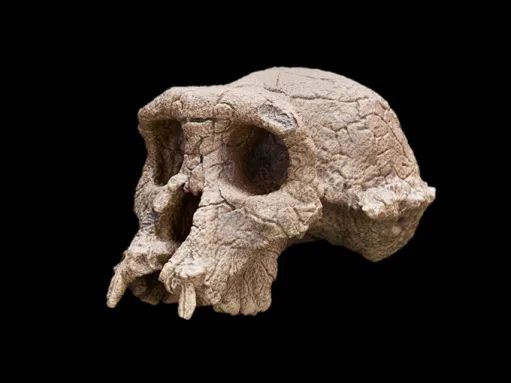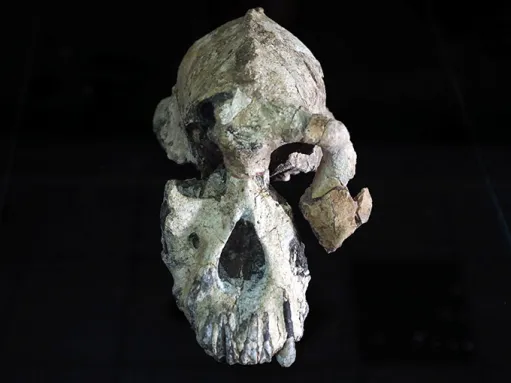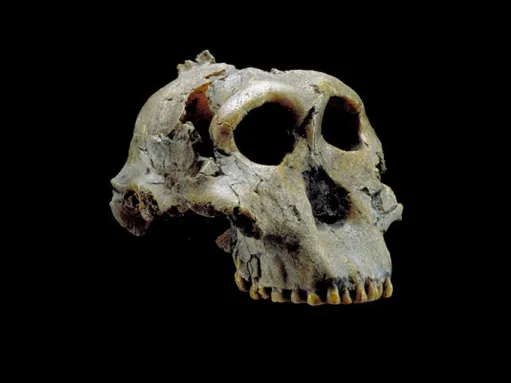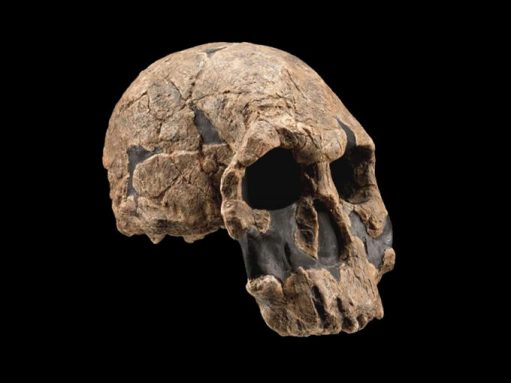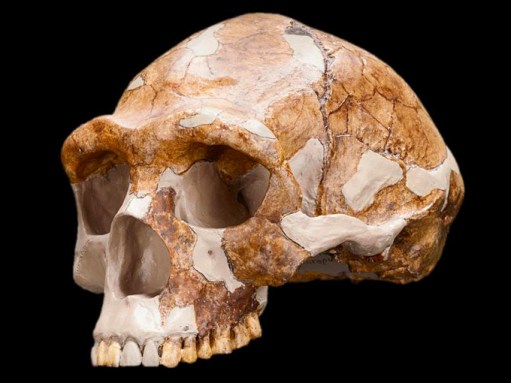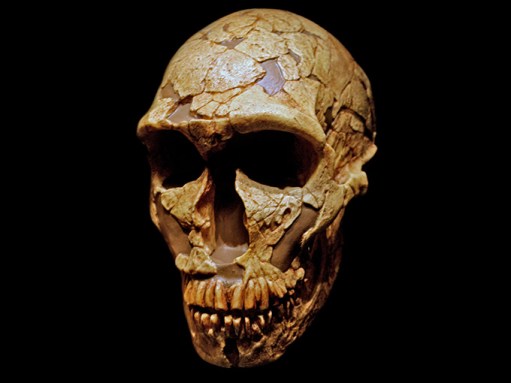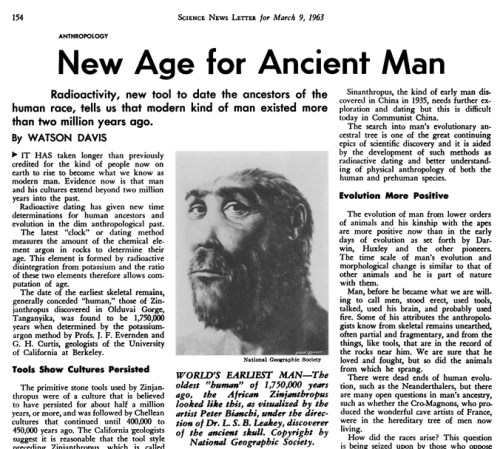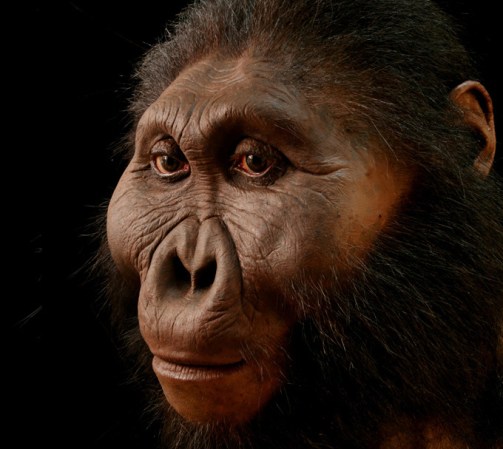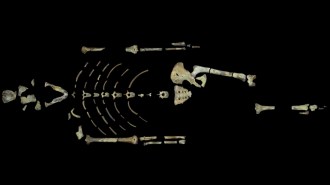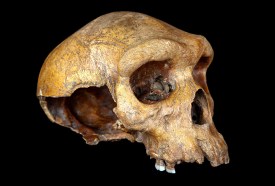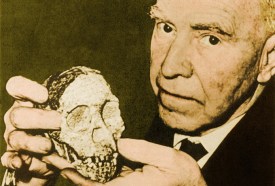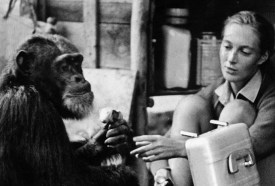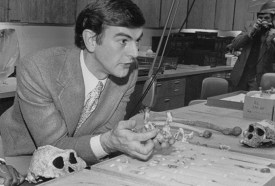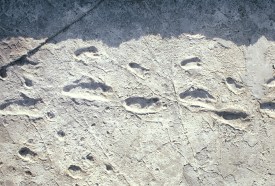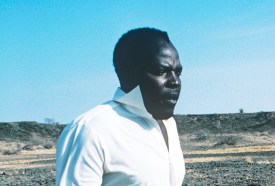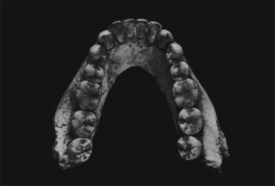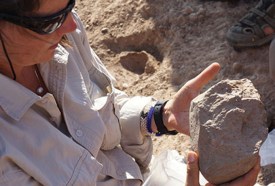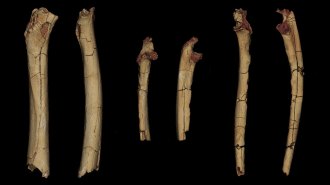
The Natural History Museum/Alamy Stock Photo
Seeking our origins
In his 1859 treatise u003cemu003eOn the Origin of Speciesu003c/emu003e, Charles Darwin devoted little more than a sentence to human origins. But soon he had enough thoughts on the subject to fill an entire book.
In The Descent of Man, published in 1871, Darwin hypothesized that our ancestors came from Africa. He pointed out that among all the living animals, the African apes — gorillas and chimpanzees — were the most similar to humans. As such, he wrote, “it is somewhat more probable that our early progenitors lived on the African continent than elsewhere.”
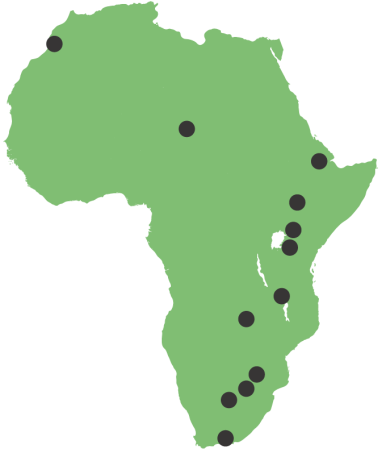
At the time, 150 years ago, Darwin had little fossil evidence to draw from. A handful of Neandertal bones had been found in Europe, but experts disagreed about whether they came from an ancient type of human or just diseased modern humans. Darwin was not deterred, though. Uncovering the fossil records of other species had been “a very slow and fortuitous process,” he noted, and geologists hadn’t yet explored the regions where our apelike ancestors were likely to be found.
Over the next 50 years, more fossils trickled in, but from Europe and Asia. By the 1920s, it looked like Darwin had picked the wrong continent.
Then in 1924, a fortuitous find in Darwin’s favor finally came.
Among the debris at a limestone quarry in South Africa, miners found the fossilized skull of a toddler. Based on the child’s blend of humanlike and apelike features, an anatomist determined that the fossil was what was then popularly known as a “missing link.” It was the most apelike fossil yet found of a hominid — that is, a member of the family Hominidae, which includes modern humans and all our close, extinct relatives.
With just that fossil, it wasn’t yet obvious a century ago that Africa was our homeland. But since that discovery in the 1920s, paleoanthropologists have amassed many thousands of fossils, and the evidence over and over again has pointed to Africa as our place of origin. Genetic studies reinforce that story. Not only are African apes our closest living relatives, but chimpanzees are more closely related to us than to gorillas. In fact, many scientists now include great apes in the hominid family, using the narrower term hominin to refer to humans and our extinct cousins.
In a field with a reputation for bitter feuds and rivalries, humankind’s African origin is something that unifies paleoanthropologists. “I think everybody agrees and understands that Africa was very pivotal in the evolution of our species,” says Charles Musiba, a paleoanthropologist at the University of Colorado Denver.
With the fossil record plus clues from genetics, paleoanthropologists have sketched a rough timeline of how that evolution played out. Sometime between 9 million and 6 million years ago, the first hominins evolved. Walking upright on two legs distinguished our ancestors from other apes; our ancestors also had smaller canine teeth, perhaps a sign of less aggression and a change in social interactions. Between about 3.5 million and 3 million years ago, humankind’s forerunners ventured beyond wooded areas. Africa was growing drier, and grasslands spread across the continent. Hominins were also crafting simple stone tools by this time. The human genus, Homo, arrived between 2.5 million and 2 million years ago, maybe even earlier, with larger brains than their predecessors. By at least 2 million years ago, Homo members started exploring beyond Africa, traveling into Eurasia. By about 300,000 years ago, our species, Homo sapiens, emerged.
But human evolution was not a gradual, linear process, as it appeared in the 1940s and ’50s. It did not consist of a nearly unbroken chain, one hominin evolving into the next through time. Fossil discoveries in the ’60s and ’70s revealed a bushier family tree, with many dead-end branches. By some counts, more than 20 hominin species have been identified in the fossil record. Experts disagree on how to classify all of these forms — “Fossil species are mental constructs,” a paleoanthropologist once told Science News — but clearly the hominin family was diverse, with some species overlapping in both time and place.
Even our species wasn’t always alone. Just 50,000 years ago, the diminutive, 1-meter-tall Homo floresiensis, nicknamed the hobbit, lived on the island of Flores in Indonesia. And 300,000 years ago, Homo naledi was a neighbor in South Africa.
Finding such “primitive” species — both had relatively small brains — living at the same time as H. sapiens was a big surprise, says Bernard Wood, a paleoanthropologist at George Washington University in Washington, D.C. Those discoveries, made within the last two decades, were reminders of how much is left to learn.
And there’s still a lot of ground to explore – even in Africa. Despite many decades of fieldwork, paleoanthropologists have investigated only a small fraction of the continent. “So there’s a hell of a lot going on in the early stages of hominin evolution that probably are not being sampled by the existing fossil sites,” Wood says.
It’s premature to pen any comprehensive explanation of human evolution, he says. Our origin story, while much advanced from Darwin’s Descent of Man, is still a work in progress. — Erin Wayman
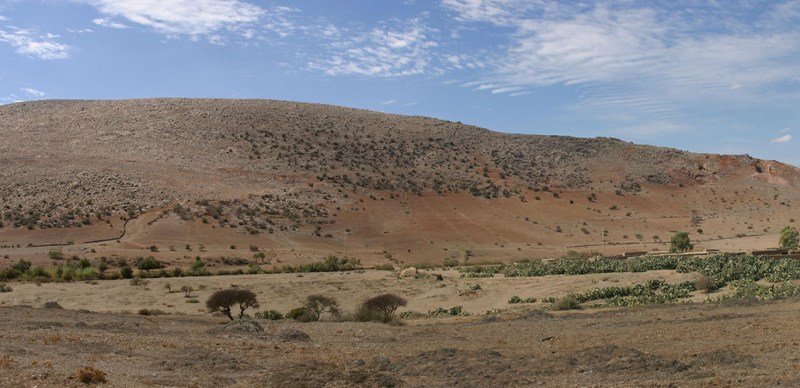
Eyes on Africa
Raymond Dart was preparing to host a wedding.u003cbru003eu003cbru003eIt was a November afternoon in 1924, and the Australian-born anatomist was already partially dressed in formal wear. But then he was distracted by some fossils in rocks that had just been delivered to his home in Johannesburg, South Africa, from a mine near the town of Taung.
Imprinted on a knobby rock about as big as an orange were the folds, furrows and even blood vessels of a brain. It fit perfectly inside of another rock that had a bit of jaw peeking out.
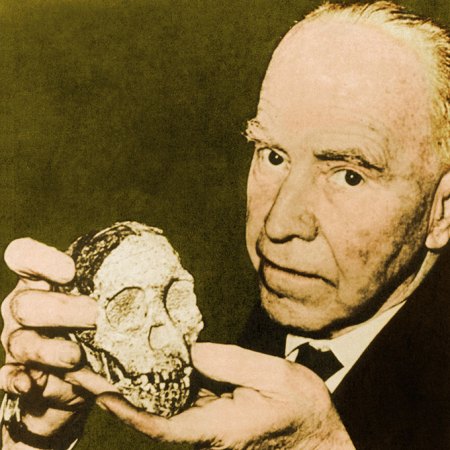
And then the groom found Dart. “My god, Ray,” he said. “You’ve got to finish dressing immediately — or I’ll have to find another best man.” The fossils would have to wait.
As soon as the festivities ended, Dart, 31 years old at the time, started removing the jaw from its limestone casing, chipping away with knitting needles. A few weeks later, he had liberated not just a jaw but a partial skull preserving the face of a child.
On February 7, 1925, in a report in the journal Nature, Dart introduced the Taung Child to the world. He described the fossil as an ape like no other, one with some distinctly humanlike features, including a relatively flat, “delicate” face and fairly small canine teeth. The foramen magnum, the hole through which the spinal cord exits the head, was positioned directly under the skull, implying the child had an erect posture and walked on two legs.
Dart concluded that the Taung Child belonged to “an extinct race of apes intermediate between living anthropoids and man.” His italicized text emphasized his judgment: The fossil was a so-called “missing link.” He named it Australopithecus africanus, or southern ape of Africa.
The Taung Child was the second hominin fossil discovered in Africa, and much more primitive than the first. Dart argued that the find vindicated Charles Darwin’s belief that humans arose on that continent. “There seems to be little doubt,” Science News Letter, the predecessor of Science News, reported, “but that there has been discovered on the reputed ‘dark’ continent a most important step in the evolutionary history of man.”
But for the most part Dart’s claims were met with skepticism. It would take more than two decades of further fossil finds and advances in geologic dating for Dart to be vindicated — and for Africa to become the epicenter of paleoanthropology.
Against the establishment
Unlike Darwin, many evolutionists of the late 19th and early 20th centuries had theorized that the human family tree was rooted in Asia. Some argued that Asia’s gibbons were our closest living relatives, not Africa’s gorillas and chimpanzees. Others reasoned that tectonic activity and climate change in Central Asia sparked human evolution. One naturalist even proposed that human origins traced back to a lost continent that had sunk in the Indian Ocean, forcing our ancestors to relocate to Southeast Asia.
And that’s where the best contender for an early human ancestor had been found. In the 1890s, a crew led by Dutch physician-turned-anthropologist Eugène Dubois had uncovered a skullcap and thigh bone on the Indonesian island of Java. The incredibly thick skullcap had heavy brow ridges, but Dubois estimated it once held a brain that was about twice as big as an ape’s and approaching the size of a human’s. The thigh bone indicated that this Java Man walked upright.
Europe also had some tantalizing fossils. Neandertals had been known since the mid-19th century, but by the early 20th century, they were generally thought to be cousins that lived too recently to shed much light on our early evolution. It was a 1912 discovery that centered attention on Europe. An amateur archaeologist had recovered skull fragments, some teeth and a jawbone from a gravel pit near Piltdown, England; the pit also contained fossils of extinct creatures, suggesting Piltdown Man was of great antiquity. He had a human-sized brain, but his primitive jaw had a large, apelike canine tooth.
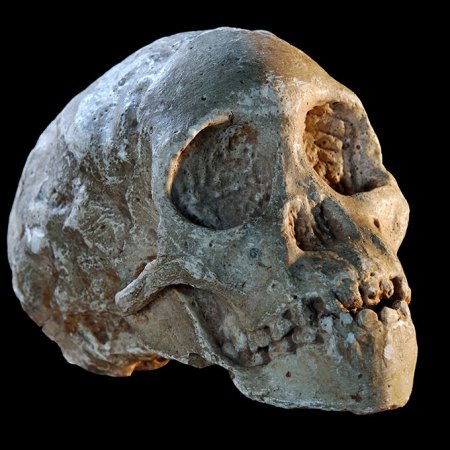
Some experts questioned whether the skull and jaw belonged together. But British scientists embraced the discovery — and not just because it implied England had a role in human origins. Piltdown Man’s features fit with the British establishment’s view of human evolution, in which a big brain was the first trait to distinguish human ancestors from other apes. “It was not the adoption of the erect attitude that made Man from an Ape, but the gradual perfecting of the brain,” Grafton Elliot Smith, an influential anatomist at University College London, wrote in 1924.
So when Dart announced that he had found a small-brained bipedal ape with humanlike teeth — in the harsh, dry southern tip of Africa — scientists were primed to be skeptical, says Paige Madison, a historian of science at the Natural History Museum of Denmark in Copenhagen. Scientists were also primed to be skeptical of Dart. While a student in London studying under Elliot Smith, Dart had earned a reputation as a “scientific heretic, given to sweeping claims,” according to a paper coauthored by a colleague.
But initial criticism focused mostly on practical concerns, says Madison, who has studied the skeptics’ reactions. “I found what they were actually saying on paper to be quite reasonable.”
A big problem: Dart’s fossil was of a youngster, about 3 or 4 years old. Critics pointed out that a young ape tends to resemble humans in some ways, but those similarities disappear as the ape matures. Critics also complained that Dart hadn’t done proper comparative analyses with young chimps and gorillas, and he refused to send the fossil to England where such analyses could be done and where other experts could examine it for themselves. This refusal irked the British old guard. “It was unpalatable to the scientists in England that the young colonial upstart had presumed to describe the skull himself,” one of Dart’s contemporaries later wrote, “instead of submitting it to his elders and betters.”
It’s hard not to wonder how the era’s colonialist and racist attitudes shaped perceptions. The Taung Child came to light at a time when eugenics was still considered legitimate science, and much of anthropology was devoted to categorizing people into different races and arranging them into hierarchies. On the one hand, Western researchers tended to maintain the perverse notion that Africans are more primitive than other people, even less evolved. On the other, they wanted to believe Europe or Asia is where humans originated.
How these views influenced reactions to the Taung Child is not clear-cut. Many skeptics didn’t cite the fossil’s location as a problem, and some acknowledged humans could have evolved in Africa. But deep-seated biases may have made it easier for some researchers to reject the Taung Child and accept Piltdown Man, even though fossil evidence for that claim was also scant, says Sheela Athreya, a paleoanthropologist at Texas A&M University in College Station.
Newspapers worldwide closely followed the controversy over the Taung Child, and public reaction was mixed. While fans sent Dart a bevy of poems and short stories casting the child as a national hero, he also received angry letters from disapproving creationists.
Amid it all, Dart had convinced at least one well-known scientist. Robert Broom, a Scottish-born physician living in South Africa and an authority on reptile evolution, recognized that fossils of fully grown A. africanus individuals would be needed to confirm that the Taung Child’s humanlike qualities were retained in adulthood.
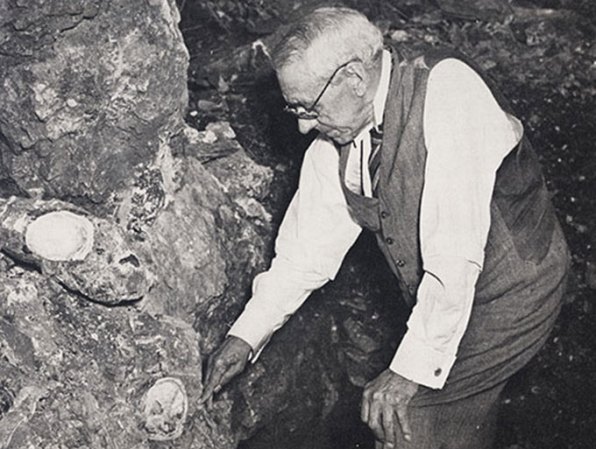
In 1936, at nearly the age of 70, Broom began to find just that evidence in limestone caves not far from Johannesburg. Often detonating dynamite to free specimens, he amassed a collection of fossils representing both the young and the old. Limb, spine and hip bones confirmed South Africa was once home to a bipedal ape, and skull bones verified Dart’s inferences about A. africanus’ humanlike teeth.
Even the staunchest Dart doubters couldn’t overlook all this evidence. British anatomist Arthur Keith, one of Dart’s most vocal critics who had once called his assertions “preposterous,” conceded. “I am now convinced,” he wrote in a one-paragraph letter to Nature in 1947, “that Prof. Dart was right and that I was wrong; the Australopithecinae are in or near the line which culminated in the human form.”
Some Dart doubters had to admit they were wrong about Piltdown Man too. As more and more fossils had been found in Africa and Asia, Piltdown Man looked more and more out of place in the human family tree. In 1953, researchers exposed the fossils to be a hoax — someone had planted a modern human skull alongside an orangutan jaw, stained to match the surrounding gravel and with its teeth filed down. Many experts outside of England had never been convinced by the find in the first place. “It was not a complete surprise when he was proved to be a fake,” Science News Letter reported.
Yet, Africa’s role in early human evolution was still not cemented. From the time of the Taung Child’s discovery through World War II, hominin fossils continued to be uncovered in Indonesia and many more were unearthed at a cave site near Beijing called Zhoukoudian. Java Man and China’s Peking Man — today recognized as members of the same species, Homo erectus — kept the focus on Asia.
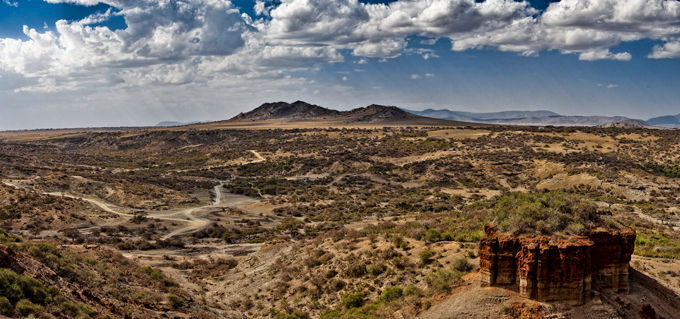
A series of surprises
It was ultimately a series of discoveries made by the husband-wife paleoanthropologists Louis and Mary Leakey that shifted the focus. Louis, who had grown up in East Africa as the son of English missionaries, had long believed Africa was the homeland of humans (even though he had been told while a student in England not to waste his time searching there). While Broom was scouring South Africa in the 1930s, the Leakeys began exploring Olduvai Gorge, the site of an ancient lake bed in what is now Tanzania.
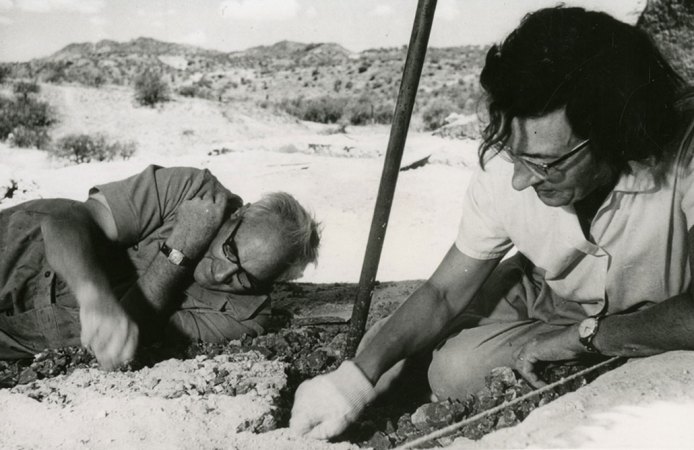
Year after year, the pair failed to find hominin fossils. But they did find simple stone tools — chopping implements now called Oldowan tools — suggesting that ancient hominins must have lived in the region. So they kept looking. One day in July 1959, while an ill Louis stayed behind in camp, Mary discovered a skull eroding out of the ground. The skull had much in common with Australopithecus, such as small canine teeth. But the fossil’s giant molar teeth, flaring cheekbones and bony crest, running down the top of the skull where massive chewing muscles would have attached, suggested something else. Nicknamed Nutcracker Man for its chompers, the species was dubbed Zinjanthropus boisei (it’s now called Paranthropus boisei because it is clearly a close cousin of P. robustus, a South African species found by Broom).
Until the discovery of Zinjanthropus, determining a hominin fossil’s age was largely a guessing game because there was no good way to measure how long ago ancient fossils or rocks formed. But advances in nuclear physics in the early and mid-20th century led to the invention of radioactive dating techniques that allowed age calculations. Using such a method, called potassium-argon dating, geologists reported in 1961 that Zinjanthropus came from a layer about 1.75 million years old — three times older than the Leakeys initially suspected. (Later, A. africanus proved to be an even older species, living about 2 million to 3 million years ago.) The discovery vastly stretched the timescales on which researchers were mapping human evolution.
Spotlight
Radiometric dating puts pieces of the past in context. Here’s how
Carbon dating and other techniques answer essential questions about human history, our planet and the solar system.
The surprises didn’t end there. In the early 1960s, the Leakeys’ team recovered numerous fossils belonging to a hominin that lived at roughly the same time as Zinjanthropus but had smaller, more humanlike teeth and a brain notably bigger than that of both Zinjanthropus and Australopithecus. Because of the elevated brain size and details of the hand anatomy, the Leakeys argued that this hominin was the one who made the tools at Olduvai Gorge and was a true human; in 1964, Louis and colleagues placed it in the human genus with the name Homo habilis, or handy man.
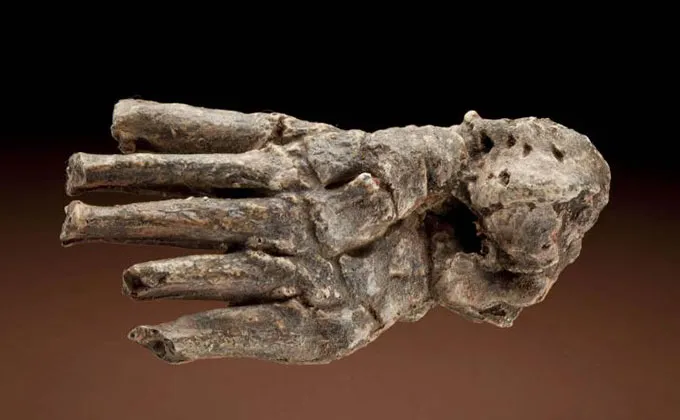
The Homo designation was controversial, and to this day paleoanthropologists debate how to classify these fossils. Still, the discoveries at Olduvai Gorge piqued public interest, brought in immense funding and kicked off a paleoanthropological gold rush in Africa. Over the last 60 years, researchers have shown again and again that the hominin fossil record stretches farthest back in Africa. Today, the oldest purported hominins date back some 6 million or 7 million years — to around the time when the ancestors of humans and chimpanzees probably parted ways.
— Erin Wayman
The earliest hominins
By the mid-20th century, there was growing recognition that Africa was where our early ancestors evolved. Researchers set up shop across the fossil-rich badlands of East Africa’s Great Rift Valley, and paleoanthropology became a race to find the earliest hominin.
“And that race hasn’t ended yet,” says paleoanthropologist John Hawks of the University of Wisconsin–Madison. “What you see in the 1960s and early ’70s is a reorientation of exploration to find older and older sediments.”
Digging ever deeper into the past has shown that each new “oldest” fossil has the power to reshape our understanding of critical evolutionary turning points. The discoveries of Lucy and Ardi, two of the most complete early hominin skeletons ever found, are great examples. Lucy led to new thoughts on the origins of our genus, while Ardi prompted debate over the origins of hominins as a whole.
Lucy in the ground with fossils
Donald Johanson was feeling lucky. Or so the 31-year-old noted in his diary on November 24, 1974, before heading out to explore the Hadar field site in Ethiopia’s Afar region. Later that day, he and a graduate student made an incredible discovery: They found a skeleton that was roughly 40 percent complete. It belonged to a hominin that lived 3.2 million years ago. Johanson and his crew celebrated at camp that night, listening to the Beatles song “Lucy in the Sky with Diamonds” again and again. They soon started calling the fossil Lucy.
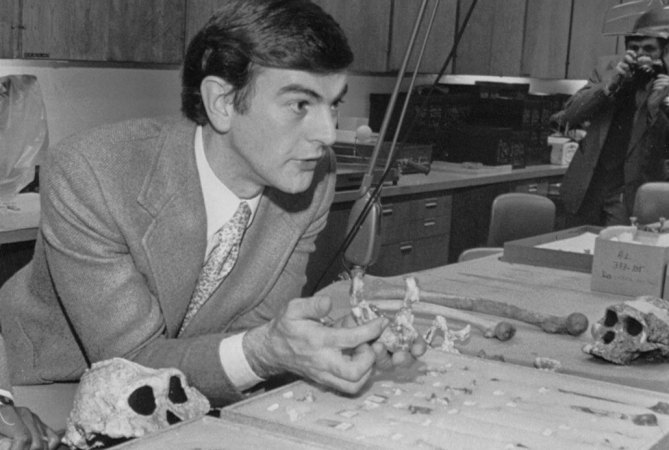
Johanson’s luck continued. The following year, he found what has been cheekily nicknamed the First Family, a collection of hominin bones representing at least 13 individuals. In total, fieldwork at Hadar in the 1970s yielded more than 200 hominin specimens.
But Johanson didn’t know exactly what he had found. He teamed with another American paleoanthropologist, Tim White, who thought the Hadar sample resembled roughly 3.6-million-year-old bones from a site in Tanzania called Laetoli. The identity of those bones was also unknown.
After painstaking comparative work, Johanson and White concluded in 1978 that the Hadar and Laetoli collections represented a single species. They called it Australopithecus afarensis. It was the first new hominin species named in almost 15 years and the oldest, most primitive one yet unearthed.
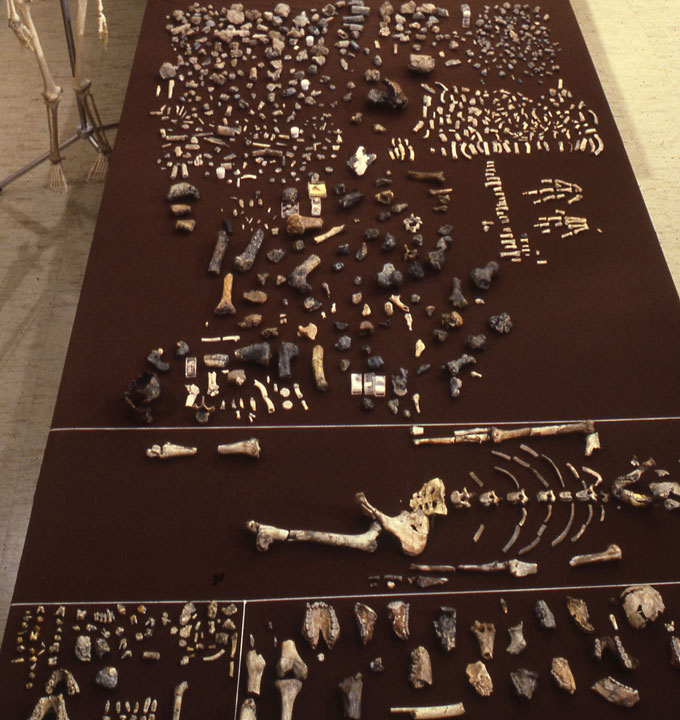
Lucy’s species had a brain not much larger than a chimp’s, about 450 cubic centimeters, roughly a third the volume of the average human brain today. It also had a protruding face, and the jaw’s shape and some aspects of the teeth were apelike. But there were clear connections with humans: The canine tooth was small, and bones of the foot, leg, pelvis and spine indicated the species walked upright. A trackway of more than 50 fossilized footprints at Laetoli, presumably left by A. afarensis given their age, suggested that the species was adept on two legs. Like humans today, it had an arched foot and a big toe that was in line with the others, which helps propel the foot forward to take a step.
A. afarensis verified the mosaic nature of human evolution. Rather than a “march of progress” — with an ape slowly and steadily morphing into a tall, hairless person — hominin evolution was more piecemeal. Bipedalism, it was now clear, evolved well before brains grew bigger. Fragmentary finds from South Africa had hinted that this was true, but Lucy’s relatively complete skeleton clinched the case.
Today, Lucy is world-famous, an emblem of human evolution and so revered that in 2015, then-President Barack Obama visited her remains on a trip to Ethiopia. But back in the ’70s, her entrée on the world stage was overshadowed by a deep rift that formed in anthropology. A feud between Johanson and the preeminent hominin-hunting family, the Leakeys, spilled out of the halls of academia and onto the front page of the New York Times.
The source of tension was how Johanson and White analyzed the A. afarensis fossils and where they placed the species in the human family tree. The pair argued that A. afarensis was the ancestor of all known hominin lines, both later forms of Australopithecus and the genus Homo.
The Leakeys vehemently disagreed.
Mary and Louis Leakey had established East Africa as a paleoanthropology hot spot in the 1950s. In 1968, their son Richard set up his own site at Kenya’s Lake Turkana. After Louis’ death in 1972, Mary started excavating at Laetoli — her team found the fossils that Johanson and White had included in their analysis.
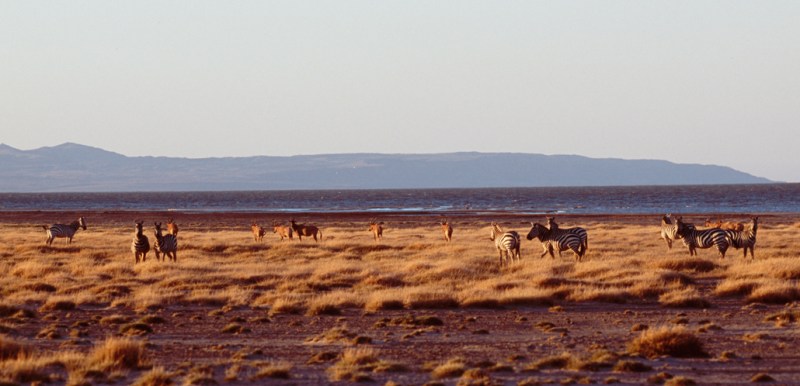
The Leakeys maintained that Homo was a lineage at least as ancient as Australopithecus. At Lake Turkana, Homo had lived alongside a “robust” species of Australopithecus, one with specializations for grazing on grass, and maybe even preceded it. One particularly large-brained Homo skull found there was originally thought to date to 2.9 million years ago, and Richard was confident that future discoveries would push the Homo line back all the way to 4 million, maybe 5 million years ago. If so, Australopithecus would be too young to be a direct human ancestor.
Richard and Mary also argued that the Hadar and Laetoli fossils were too varied — and separated by too much distance and time — to be one species and instead represented two, one possibly being Homo.

In 1979, Mary complained to Science News that Johanson’s work “was not very scientific.” Johanson griped that she “really shows a poor appreciation of what evolution is all about.” Tempers came to a head in 1981 when Johanson and Richard squared off on a TV show hosted by news anchor Walter Cronkite.

But the Leakeys’ position soon lost sway once an error in the dating of Richard’s Homo skull was recognized and it proved to be a million years younger than originally thought, making it much younger than Lucy. Though the exact start time for our genus is still hazy — it may go back 2.5 million or even 2.8 million years — researchers largely agree that Homo descended from some form of Australopithecus.
And experts have generally accepted A. afarensis as a species — though fossil finds over the last decade suggest that at least one other type of hominin lived alongside Lucy. Such discoveries mean it may be time to take another look at whether the Hadar and Laetoli fossils belong together, says Charles Musiba, a paleoanthropologist at the University of Colorado Denver who works at Laetoli and was mentored by Mary Leakey. Perhaps these fossils represent more than one species after all, he says.
It’s a suggestion that’s sure to spark controversy.
Ardi shakes things up
In 1994, White and colleagues announced the discovery of a species even older than Lucy in Ethiopia, dating to 4.4 million years ago. But scientists had to wait another 15 years before the discoverers released a detailed analysis of the species, called Ardipithecus ramidus.
The details were bewildering. Ar. ramidus fossils, including the relatively complete skeleton of a female dubbed Ardi, look unlike any other known hominin, White’s group reported in 2009. “Ardipithecus is so rife with anatomical surprises that no one could have imagined it without direct evidence,” White told Science News at the time.
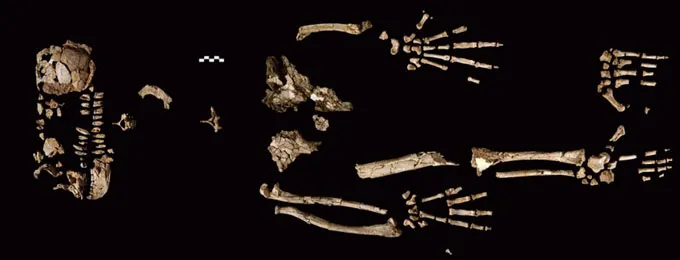
Aspects of the pelvis and spine indicate Ardi could walk on two legs, but her flat feet and thumblike opposable big toe, more useful for grasping trees than for walking, suggest she probably did so only in short spurts. And though she probably spent a lot of time in trees, she didn’t have arms for swinging or hanging from branches like chimpanzees and gorillas do. Instead, she may have been more of a slow, deliberate climber or even walked on the tops of tree limbs on all fours.
These interpretations of Ardi’s anatomy — and even her hominin status — are not universally accepted. But Ardipithecus forced a rethink among paleoanthropologists.
At the time, scientists tended to think hominins arose from a knuckle-walking, tree-swinging ape — essentially seeing chimps as stand-ins for the most recent common ancestor of chimps and humans. Ardi’s anatomy challenged that view. Her features suggest that she didn’t descend from such an ape. So if she truly is a hominin, the chimp-human ancestor was unlike any living ape.
In fact, chimpanzees and gorillas may have independently acquired knuckle-walking and even tree-swinging through parallel evolution in the 6 million to 9 million years since the human and chimp lineages split. These closely related creatures may have evolved similar traits in response to similar environmental pressures. That may seem far-fetched, but parallel evolution was rampant among the dozens of different ape species that lived in Africa, Asia and Europe during the Miocene Epoch, some 23 million to 5 million years ago, says Sergio Almécija, a human evolution researcher at the American Museum of Natural History in New York City.
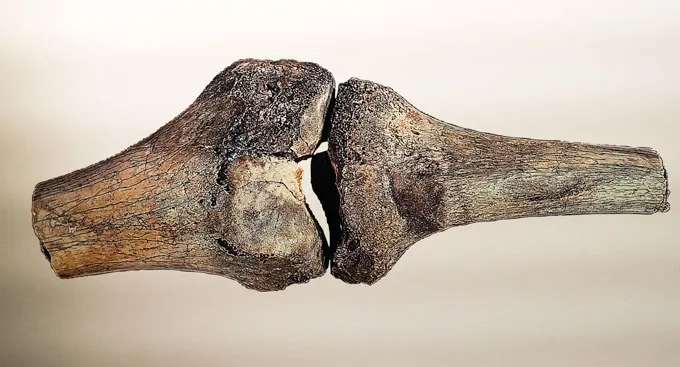
Pervasive parallel evolution complicates the search for the earliest hominins, he says. “We are walking on quicksand.”
Take the 11.6-million-year-old ape called Danuvius from Germany reported in 2019. Danuvius’ discoverers say it had bipedal tendencies. That claim is controversial, but raises the possibility that apes other than hominins could have walked on two legs.
Almécija argues that using living apes as the only point of reference to understand hominin origins is too limiting. “We need to widen the scope of our comparisons to include also the apes that lived before the chimp-human split,” he says.
The search for early hominins is also hampered by a sparse fossil record in Africa from the time when our lineage probably originated. There’s the 6-million-year-old Orrorin tugenensis from Kenya and the 7-million-year-old Sahelanthropus tchadensis from Chad. But only a few fossils of each have been found, and the species’ ties to hominins are not definitive. There’s also almost no fossil evidence of chimpanzee ancestors to compare such species against.
As the race to find the first hominins continues, researchers need to stay open-minded, Almécija warns. “In my opinion, we subconsciously fit every new fossil into preexisting evolutionary scenarios,” he says. But as the last century has shown, paleoanthropologists’ thinking needs to evolve with the finds.
— Erin Wayman
Tales from our genes
Even after it became clear in the mid-20th century that hominins as a group originated in Africa, it was still uncertain where our species got its start. By the 1980s, paleoanthropologists had largely settled into two camps. One side claimed that, like the earliest hominins, modern humans came from someplace in Africa, while the other championed a more diffuse start across Africa, Asia and Europe.
That same decade saw researchers increasingly relying on genetics to study human origins. Initially, scientists looked to modern people’s DNA to make inferences about ancient populations. But by the late 1990s, geneticists pulled off a feat straight out of science fiction: extracting and decoding DNA preserved in hominin fossils.
For paleoanthropologists, studying ancient DNA has been like astronomers getting a new telescope that sees into deep space with a new wavelength of light. It’s revealing things no one even thought to look for, says John Hawks of the University of Wisconsin–Madison. “That is the most powerful thing that genetics has handed us.”
And it’s revealed a truly tangled tale.
A trellis or candelabra
Long before the rise of genetics, or even the discovery of many hominin fossils, unraveling human origins was a quest to explain how the world’s different races came to be. But after the horrors of World War II, anthropologists started to reject the concept of race.
“This was a real moral hinge point in the science,” Hawks says. “It was a realization that viewing things through the perspective of race was creating evils in the world.” And it was scientifically dubious, as genetic evidence has shown that people are all so similar that race is more of a cultural concept than a true biological phenomenon. Humans, in fact, are less genetically diverse than chimps.
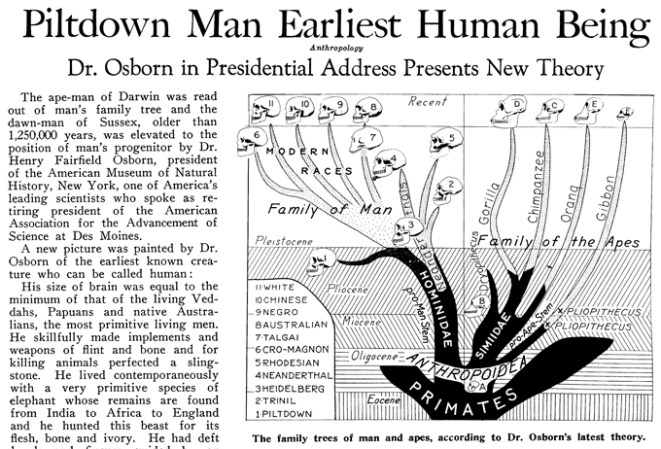
As race was deemphasized in the 1940s and ’50s, anthropologists started to worry less about measuring and classifying fossils into many different types and think more about the mechanisms of evolution and how populations change over time, a direct influence of the “modern synthesis” that had united Darwinian evolution and genetics around this time. One consequence was that researchers simplified hominin classification, grouping fossils into a small number of species, with one evolving directly into the next in “a very simple, straight-line scenario,” Hawks says.
One influential forerunner to this period was anatomist and anthropologist Franz Weidenreich. After leaving Nazi Germany in the 1930s, he ended up in China, studying fossils known as Peking Man (now classified as Homo erectus), who lived several hundred thousand years ago. Peking Man looked much like a human today but had thicker bones, a heavy brow ridge and a flatter skull housing a smaller brain. Weidenreich noticed that Peking Man shared certain features, such as shovel-shaped incisor teeth, with some present-day East Asians.
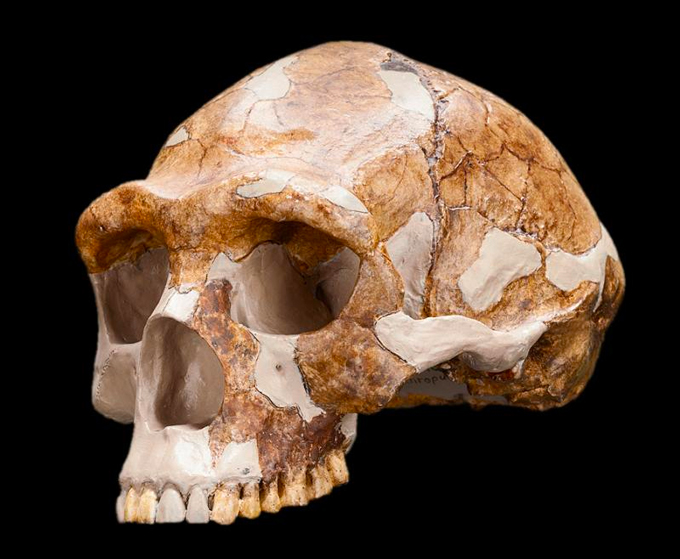
From this observation of apparent regional continuity across time, he concluded there had never been just one real-life Garden of Eden. As he wrote in 1947, “Man has evolved in different parts of the old world.”
Rather than picturing a family tree with one main trunk and branches, he envisioned human evolution to be like a trellis. Vertical lines represented groups of humans from different geographic regions, with the crisscrossing lines of the lattice representing mating between groups. Such gene flow enabled ancient forms across Africa, Asia and Europe to stay a unified species that gradually evolved into modern humans, with some regional variation maintained.
One consequence of all that mixing was that “pure” races never existed.
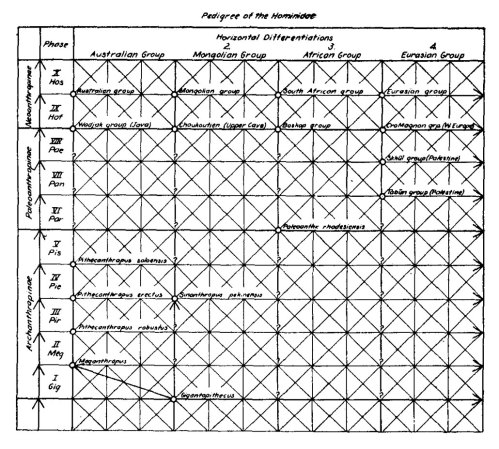
But a minority of researchers clung to the idea that race was central to understanding human evolution. In 1962, American anthropologist Carleton Coon transformed Weidenreich’s trellis into a candelabra, trimming away the intersecting lines. He argued that modern races stemmed from a common ancestor, but different lines independently evolved into H. sapiens, with races crossing the “sapiens” boundary at different times. In his view, Science News Letter explained, “the Negro race is at least 200,000 years behind the white race on the ladder of evolution.”
It’s a deeply disturbing statement to type today, and it was also rejected by many at the time. Coon published his claims during the height of the U.S. civil rights movement, less than a year before Martin Luther King Jr. stood on the steps of the Lincoln Memorial and shared his dream of racial equality. Advocates of segregation cited the supposed evidence of inferiority to justify their racist agenda. But many experts discounted Coon’s views. It’s an “extreme opinion,” one anthropologist told Science News Letter, lacking “evidence of any nature to support it.”
Still, Coon’s claims tarnished Weidenreich’s view of human evolution. And in the 1960s and ’70s, interest in the origins of our species waned as discoveries from much earlier stages of hominin history, many millions of years ago, captured both scientists’ and the public’s attention.
H. sapiens arrives, somehow
In the mid-1980s, anthropologists renewed their interest in disentangling the roots of H. sapiens. By then, a basic picture of human evolution had emerged: Hominins arose in Africa, and H. erectus was the first to venture outside of it, moving into Eurasia by what we now know was nearly 2 million years ago. In some places, H. erectus persisted for a long time; in others, new groups appeared, such as the Neandertals (H. neanderthalensis) in Europe and Asia. At some point, somehow, H. sapiens arrived and its predecessors vanished.
That “somehow” became a matter of great debate in the 1980s, ’90s and into the 2000s.
Milford Wolpoff, a paleoanthropologist at the University of Michigan in Ann Arbor, and colleagues revived Weidenreich’s trellis model, restoring the latticework in the 1980s. Under this “multiregional” view, it was difficult to draw a clean line between the end of H. erectus and the beginning of H. sapiens. In fact, Wolpoff argued that H. erectus and other seemingly distinct groups should be folded into our species. Through intergroup mating these earlier “archaic” H. sapiens gradually came to evolve the features of “anatomically modern” humans.
Critics doubted there could have been enough intergroup mating back then to allow a small, globally scattered population to remain as one. Chris Stringer, a paleoanthropologist at the Natural History Museum in London, and colleagues proposed instead that H. sapiens originated in just one place — descending from H. erectus or a subsequent species — and then spread across the world. Along the way, these humans replaced other hominins they encountered, including Neandertals.
Both theories were difficult to test. For instance, the single-origin idea predicted that the oldest modern human fossils should all be found in just one region. But there weren’t many well-dated fossils from the relevant time period. And seeing ourselves in the fossil record proved challenging. Researchers disagreed on what features defined modern humans. A globular head? A flat face? Something as banal as a chin? These disagreements meant researchers on both sides could often look at the same fossil data and claim support for their position.
Genetic revolution
But by the 1980s, fossils were no longer the only way to investigate the deep past. Increasingly, researchers were turning to clues hidden in DNA. In 1987, one genetic study shifted momentum toward the single-origin theory, with Africa as the point of origin.
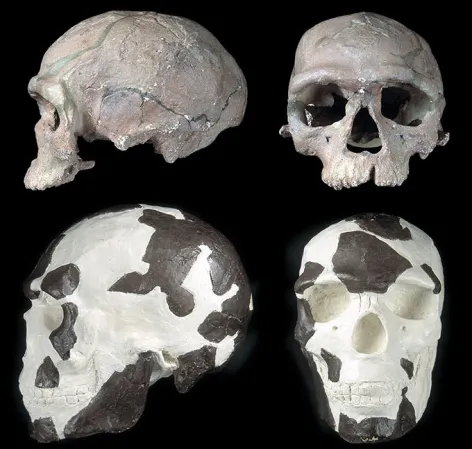
Researchers at the University of California, Berkeley analyzed mitochondrial DNA from people around the world. Because it is inherited from mother to child and undergoes no genetic reshuffling, mitochondrial DNA preserves a record of maternal ancestry. African populations showed the greatest genetic diversity, and as a result, when the team built a family tree using the genetic data, it had two main branches: One held only African lineages and the other contained lineages from all over the world, including Africa. This pattern suggested the “mother” lineage came from Africa. Based on the estimated rate at which mitochondrial DNA accumulates mutations, the team calculated that this African Eve lived about 200,000 years ago.
“Thus,” the team reported in Nature, “we propose that Homo erectus in Asia was replaced without much mixing with the invading Homo sapiens from Africa.”
Genetic evidence, like fossils, is open to interpretation. Proponents of multiregional evolution pointed out that the African lineages’ diversity may not be indicative of their greater antiquity but simply a sign that African populations were much larger than other ancient groups. Mitochondrial DNA also isn’t a complete record of the past — given its unusual inheritance, lineages are easily lost over time.
Even with those warnings, the “Out of Africa” model gained followers as more genetic evidence seemed to pile up. And in the late 1980s, 1990s and early 2000s, new dating techniques and discoveries suggested the earliest H. sapiens fossils came from Africa, at sites in Ethiopia dating to between 195,000 and 160,000 years ago. More recently, scientists have linked roughly 300,000-year-old Moroccan fossils to H. sapiens.
A new window into the past opened in 1997, when geneticists managed to remove DNA from a hominin fossil. A team led by Svante Pääbo, a geneticist now at the Max Planck Institute for Evolutionary Anthropology in Leipzig, Germany, recovered mitochondrial DNA from a Neandertal fossil from Germany. It was so different from any modern human’s DNA that it suggested Neandertals must be a separate species. It was another blow to the multiregional model.
But paleoanthropology is like solving a jigsaw puzzle without all the pieces; any new piece can change the picture. And that’s what happened in 2010. When Pääbo and colleagues assembled the Neandertal’s genetic blueprint, or genome, and compared it with modern human DNA, the team came to a startling conclusion: About 1 to 4 percent of DNA in non-Africans today came from Neandertals.
“We were naïve to think that humans just marched out of Africa, killed some Neandertals and populated the world,” archaeologist John Shea of Stony Brook University in New York later told Science News.
The genetic data seemed to support a compromise model that some researchers had proposed during the height of the Out of Africa versus multiregional debate. Yes, modern humans originated in Africa, the idea went, but once they expanded into new territories, they mated with other hominins. Hints of such hybridization had been reported in the late ’90s, when some researchers claimed a roughly 25,000-year-old child’s skeleton unearthed in Portugal had a mix of Neandertal and human features.
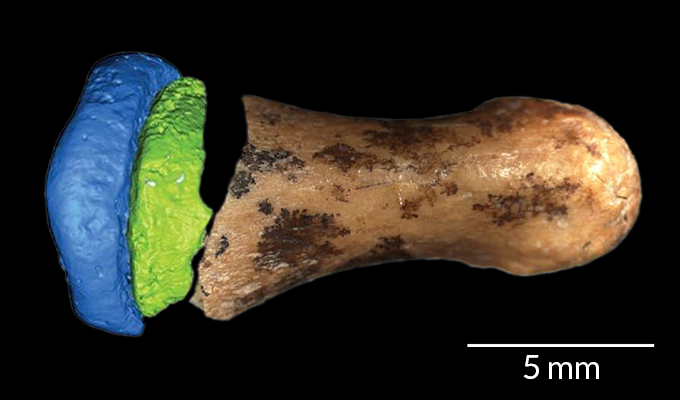
Interbreeding wasn’t the only shock to come in 2010. Pääbo’s group also analyzed DNA from a finger bone found at Siberia’s Denisova Cave. Both Neandertals and modern humans had once lived there, but the DNA didn’t match either group. For the first time, a new hominin had been discovered using genetics. Dubbed Denisovans, this group is still mysterious, known from only a few bits of bone and teeth, but Denisovans too interbred with humans. Denisovan DNA accounts for about 2 to 4 percent of Melanesian people’s genome, with a recent paper claiming one population in the Philippines with 5 percent.
It’s complicated
Over the last decade, as genetic and fossil revelations have painted a more complex picture of human origins, paleoanthropologists have started moving beyond both the multiregional and simple Out of Africa scenarios. Rather than a tree with separate branches or a trellis, human evolution was probably more like a braided stream, a concept traced to paleoanthropologist Xinzhi Wu of the Chinese Academy of Sciences in Beijing, who used a river metaphor to describe patterns of human evolution in China. Different human populations may have emerged, with some floating away and petering out and others connecting to varying degrees.
One emerging view suggests that much of early human evolution occurred in Africa, but there was no one place on the continent where H. sapiens was born. Starting at least 300,000 years ago, modern H. sapiens features start to show up in the fossil record, but these features didn’t initially appear all together. Only through the mating of different populations across Africa did the suite of behavioral and biological traits that define us today crystallize, says Eleanor Scerri, an evolutionary archaeologist at the Max Planck Institute for the Science of Human History in Jena, Germany.

“Our origins lie in the interactions of these different populations,” she says. Understanding those interactions is limited by how little of ancient Africa paleoanthropologists have explored so far. Western, central and much of northern Africa are terra incognita.
There’s still much to explore in other parts of the world too. A single, unifying explanation of human origins may not be possible, as different evolutionary processes probably shaped human history in different regions, says Sheela Athreya, a paleoanthropologist at Texas A&M University in College Station.
Making more progress on understanding those processes and our roots will come not only from new discoveries and technological advances, but also from new perspectives. For the last 100 years, our origin story has been told by mostly white, mostly male scientists. Welcoming a more diverse group of researchers into paleoanthropology, Athreya says, will reveal the blind spots and biases of the past — and of today — as scientists add to and amend the tale.
This is, after all, everyone’s story.
— Erin Wayman
Editor’s note: This story was published September 15, 2021.

Support our next century
100 years after our founding, top-quality, fiercely accurate reporting on key advances in science, technology, and medicine has never been more important – or more in need of your support. The best way to help? Subscribe.
From the archive
-
Manlike ape skull new link in man’s ancestry
In what’s billed as the “first reliable description of the newly found African precursor of man to reach America,” Raymond Dart describes the anatomy of the Taung Child fossil.
-
Africa as Man’s Cradle
After decades of debate, anthropologists are reaching consensus that hominins originated in Africa.
-
The Ascent of Man
Louis Leakey talks to Science News about his own origins, latest opinions on human evolution and predictions about the future of humankind.
-
Peking Man Refound
New Peking Man (Homo erectus) fossils unearthed in China prompt a look back at the history of discoveries there and speculation about what might have happened to fossils that went missing during World War II.
-
Shaking up the family tree
Claims that Lucy’s species, Australopithecus afarensis, was an ancestor of humans opens a big rift in paleoanthropology.
-
Erectus unhinged
Controversy over how to classify fossils of the genus Homo offers a window into a larger argument about the nature of speciation and just how bushy our family tree is.
-
Out of Arid Africa
Paleontologists debate whether climate change was a major driver of evolution in humans and other animals.
-
Giving Neandertals Their Due
Recent discoveries showcase the sophisticated behavior of Neandertals, who don’t deserve their reputation as dumb cavemen.
-
Evolution’s Bad Girl
The anatomy of the early hominin Ardipithecus ramidus suggests the ancestor of hominins was less chimpanzee-like than scientists had thought, but not everyone agrees on how to interpret the species’s features.
-
Human ancestors have identity crisis
Recognizing the earliest hominins in the fossil record is a challenge, and some purported hominins may just be ape cousins.
-
Telling stories from stone tools
Archaeologists are rethinking many long-held assumptions about how ancient stone tools were made and used — including who made them.
-
The hybrid factor
Studying hybridization in modern animals can help anthropologists understand how interbreeding might have shaped human evolution.
-
Revisiting the Kabwe skull
The first hominin fossil discovered in Africa, the Kabwe skull in 1921, is dated to about 300,000 years ago, around the time that Homo sapiens was evolving.
The Latest
-
7-million-year-old limb fossils may be from the earliest known hominid
An earlier report on one of the bones of a 7-million-year-old creature that may have walked upright has triggered scientific misconduct charges.
